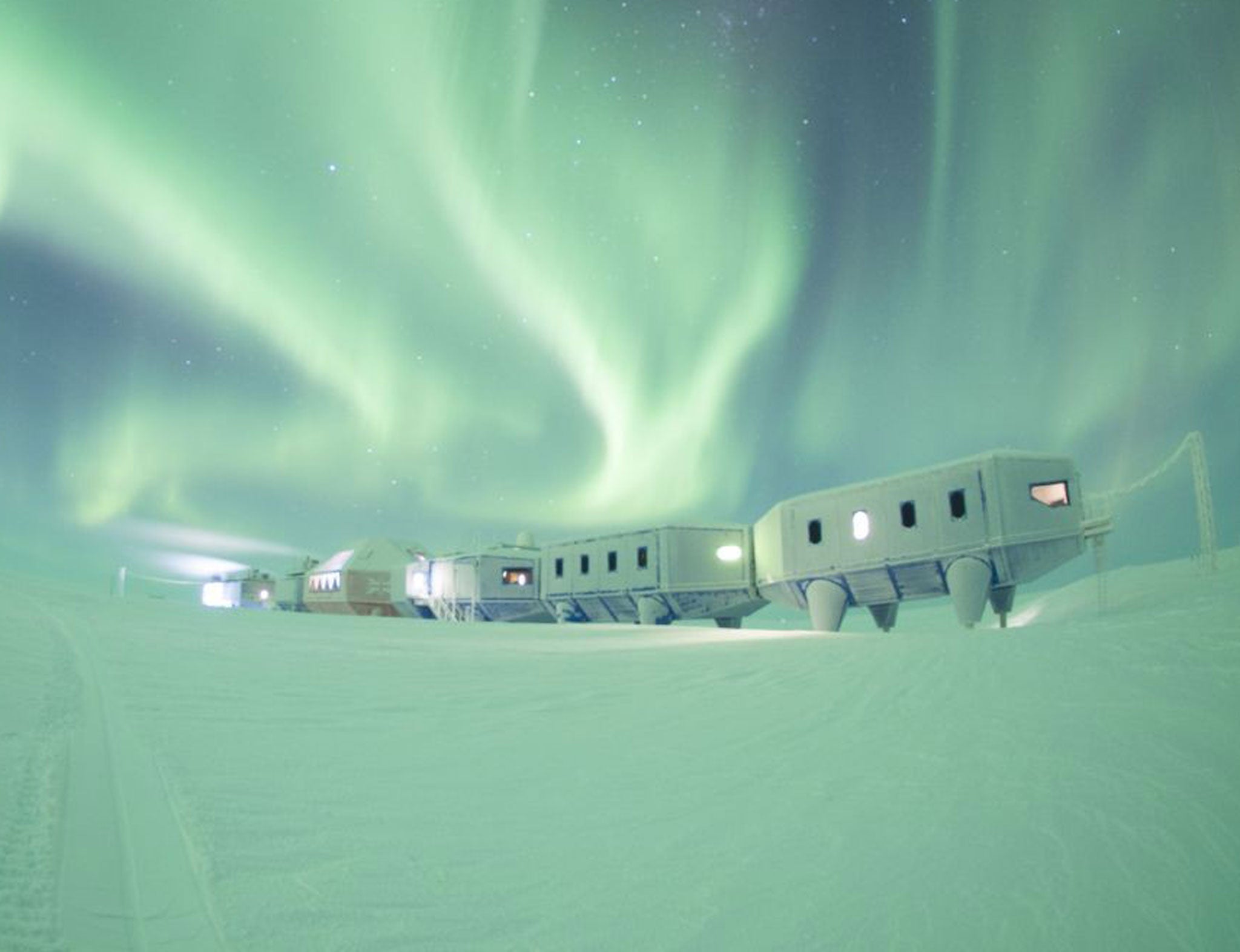Hugh Broughton's moving castle

Is there a cooler architect in Britain than Hugh Broughton? Cooler, as in designing Antarctic bases capable of withstanding temperatures of minus 55C and winds that surge to 100mph, and keeping researchers comfortable for the nine months of the year that they are marooned at their research bases without any prospect of flying or shipping out.
Broughton not only designed the British Antarctic Survey's new £25m Halley VI research station – that's it under the glowing green curtains of the aurora australis – but is working on similar bases for Spanish and South Korean teams. Not bad for an architect previously known for award-winning arts and cultural projects for less than frigid clients such as the Henry Moore Foundation and the Wallace Collection.
“The scientists were asking for new ideas. For example, did these facilities always have to look so institutional, and be so uncomfortable?” said Broughton.
The Halley V1 research station stands on the 150m-thick Brunt Ice Shelf, which is flowing out to sea at a rate of 400m per year, with snow depth increasing by a metre annually. Despite its thickness, the ice can't support point-loads of more than about nine tons.
That's why Hugh Broughton designed the living and laboratory modules with hydraulic legs. They can be retracted clear of the snow, lowered and locked onto massive skis, and then the modules can be towed away from their positions on the ice shelf if they're in danger of “calving off” as an iceberg in the summer. Halley VI is the world's first moveable polar research station.
And there is, of course, the going-nuts-in-the-middle-of-nowhere factor. How do you prevent researchers from succumbing to the literally depressing effects of both too much light, and too little? This part of the design response included an atrium in the red central module fitted with translucent nanogel panels: they let in light but are super-insulating.
Psychologist, Angela Wright, helped select deliberately vivid spring colours that would counter seasonal affective disorder, and timber veneers were chosen for the visual quality and the scent of the wood.
“This part of the design was particularly satisfying,” said Broughton. “Having designed the first double-height atrium in Antarctica, we created a circular staircase for it, lined with cedar of Lebanon, which smells great. The point is that you're very deprived, sensually. Everything around you is just flat and white. It's pretty bizarre. So we had to do everything we could to counter that.”
Halley VI has a doctor and an operating theatre, but Plan A is not to get seriously ill; one strategy concerns the bedroom light fittings which create a gradual daylight simulation that adjusts the balance between researchers' white and red blood cells as they wake up in winter darkness.
'Ice Lab: New Architecture and Science in Antarctica', Architecture and Design Scotland, Glasgow, 26 July to 2 October, before touring to Manchester Museum of Science & Industry, Manchester, 21 October to 6 January 2014
Join our commenting forum
Join thought-provoking conversations, follow other Independent readers and see their replies
Comments
Bookmark popover
Removed from bookmarks